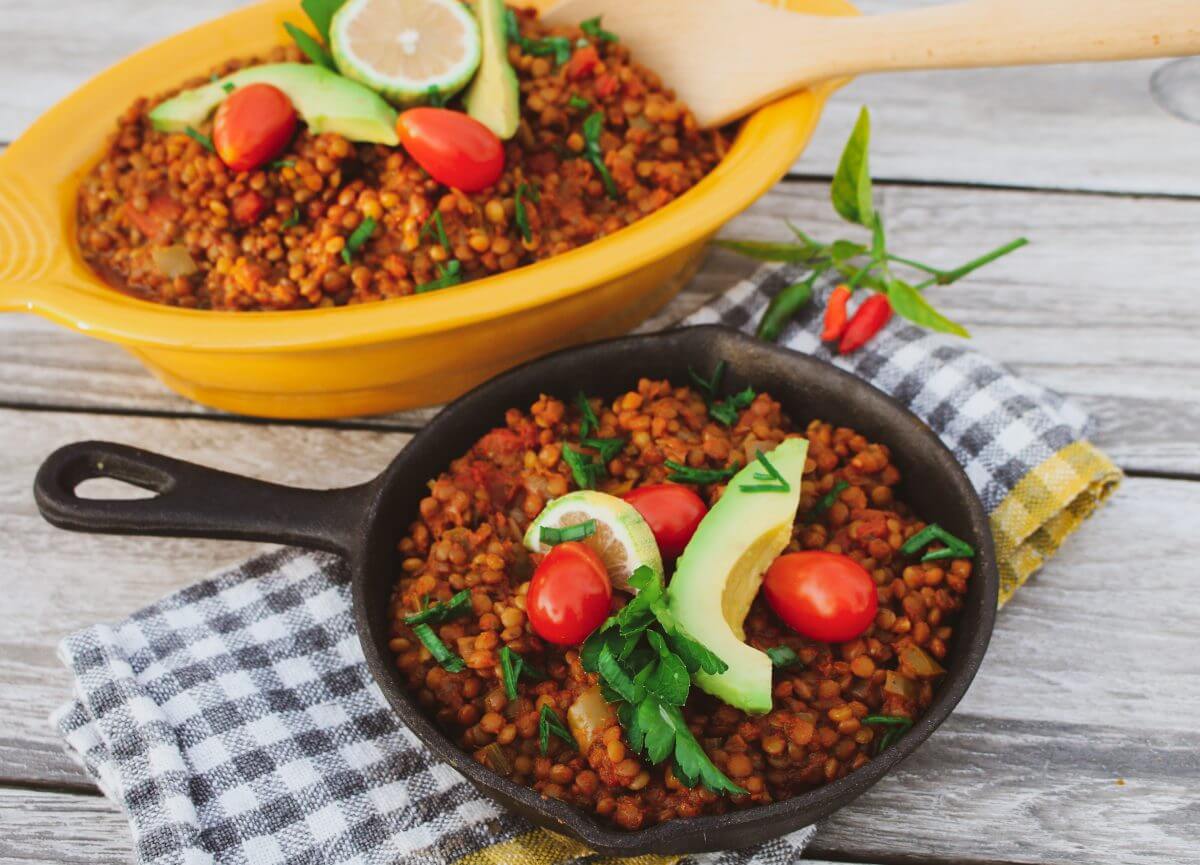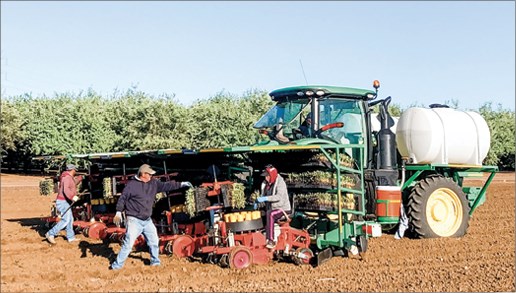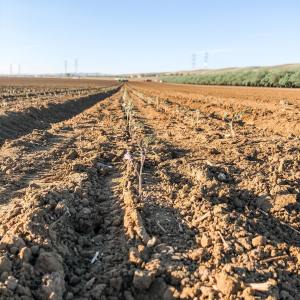
Smoky Lentil Chili
Here’s a perfect easy dish for your next Meatless Monday: Smoky Lentil Chili. The recipe is 100% plant-based (vegan) and gluten-free, perfect for everyone at your dining table. Lentils require no soaking, and cook up faster than beans. So, you can mix up the ingredients for this dish in a pot in just a few minutes, and let it bubble away for about an hour, and dinner is served! Just pair this chili with a salad and a serving of rustic whole grain bread or my Cumin Cornbread Muffins, and you have a balanced meal in no time. You can also throw all of these ingredients into a slow cooker in the morning, and a savory, fragrant meal will greet you when you come home at the end of the day. You can use an InstantPot to get the meal done even more quickly. I love to garnish this recipe with a handful of fresh cilantro and green onions. Or, let your dinner guests sprinkle it with plant-based cheese, avocado slices, Vegan Sour Cream, and tortilla strips for a hearty, delicious dish.

I featured this recipe at the KTLA 5 Morning Show recently, as the perfect recipe to help you go more plant-based for your healthy eating goals. The whole production crew just loved this chili! Vegetarian chili recipes, such as this one, are a great way to transition to a more plant-based lifestyle, as they are familiar foods. All you are doing is essentially skipping the meat, and relying on lentils for their nutritious, savory goodness. This recipe is just packed with flavorful spices and seasonings that will make even carnivores forget there is no meat in it!

Smoky Lentil Chili

Ingredients
- 1 pound small green lentils
- 4 cups vegetable broth
- 3 cups water
- 1 14.5-ounce can diced tomatoes, with liquid
- 1 6-ounce can tomato paste
- 1 onion, diced
- 1 green bell pepper, diced
- 3 stalks celery, diced
- 3 cloves garlic, minced
- 1 teaspoon liquid smoke
- 1 tablespoon chili powder
- ½ teaspoon crushed red pepper
- 1 teaspoon oregano
- ½ teaspoon smoked paprika
- 1 teaspoon dried parsley flakes
- ½ teaspoon dried mustard
- ½ teaspoon celery salt
- Kosher salt, to taste
- ½ cup chopped fresh cilantro
- ½ cup chopped green onions
Instructions
- Place lentils, broth, water, tomatoes, tomato paste, onion, bell pepper, celery garlic, liquid smoke, chili powder, crushed red pepper, oregano, smoked paprika, parsley flakes, mustard, celery salt in a large pot. Stir well, cover and bring to boil. Reduce heat to simmer and cook for about one hour.
- When thick and tender, serve into bowls. Garnish each bowl with fresh cilantro and green onion.
Notes
InstantPot Directions: Place all ingredients (except cilantro and green onions) in the container of the InstantPot. Press “Bean/Chili” setting. Cook according to manufacturer’s directions. Serve immediately. Garnish with cilantro and green onions.
Slowcooker Directions: Place all ingredients (except cilantro and green onions) in the container of the Slowcooker. Cook on high for 4-6 hours or on low for 8-12 hours. Cook according to manufacturer’s directions. Serve immediately. Garnish with cilantro and green onions.
Nutrition Information:
Serving Size:
1 servingAmount Per Serving: Calories: 262Total Fat: 2gSodium: 342mgCarbohydrates: 50gFiber: 12gSugar: 9gProtein: 16g


Recent Comments